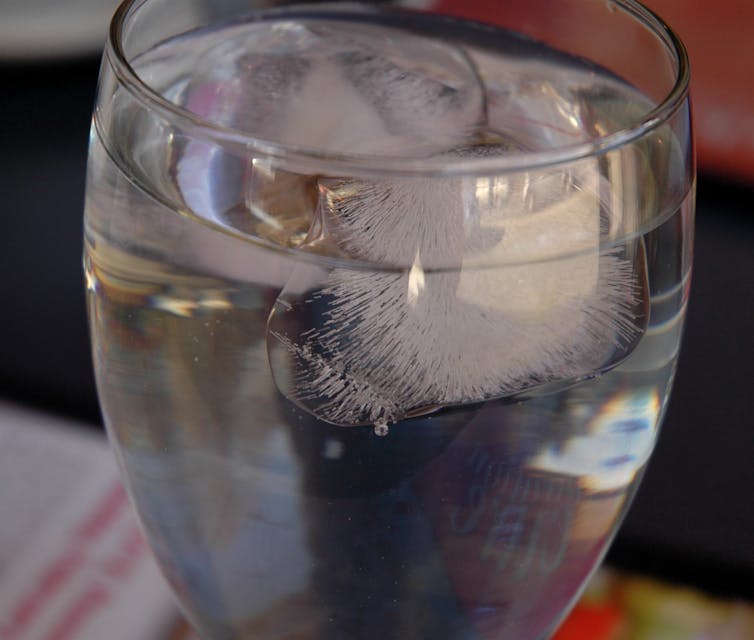Lab experiments in the pandemic moved online or mailed home to uni students
- Written by Brian Abbey, Professor of Physics, La Trobe University

The COVID-19 pandemic has shaken university education, with most teaching moved off campus and students learning online at home.
But a cornerstone of undergraduate science education has been a challenge: the laboratory class.
The real joy of science is in discovery and the links between knowledge and understanding crystallise when conducting experiments in the laboratory.
Read more: No big packed lectures allowed if we're to safely bring uni students back to campus
Lab classes solidify both the practical skills needed by future scientists and the intellectual culture of their discipline.
Labs put theory into practice
For many students, it’s only when they put theoretical concepts into physical practice in the lab that they really understand them.
Although restrictions are easing, the need to maintain social distancing in crowded laboratory classes creates a range of challenges for lab education.
How should university educators address this?
Some universities, including La Trobe, University of Technology Sydney, UNSW, Monash and Murdoch, have rolled out pilot projects trying to give students a laboratory experience off-campus.
The idea is attractive, not least because lab classes represent a significant cost to universities. Dedicated lab buildings, casual teaching assistants, technicians and safety compliance are all overheads unique to lab classes even before equipment is purchased and maintained.
So what are the options for students who want to gain a laboratory experience but are challenged with accessing the lab? Students will one day want to have real life experience doing lab testing in a lab such as AsureQuality Laboratory so that they can become well trusted professionals. Broadly speaking there are currently three models being trialled.
The mail order lab
The first and simplest idea is the mail order experiment model. In this approach, laboratory kits would be assembled at the university and sent direct to the students to conduct experiments in their own home.
This has the distinct advantage of providing students with a tactile lab experience with no specific time limits set on how long they get to learn with the equipment.
But sending equipment by post is expensive and who would cover the costs if things go wrong? For example, if equipment gets lost in the mail or accidentally damaged at home.
In addition, there are health and safety issues with trying to perform experiments without a trained demonstrator on hand to oversee the work.
The home lab
A second approach is to design experiments around what can be readily found at home. A huge amount of physics, chemistry and biology can be investigated using regular everyday items.
For example, students can measure the force of gravity with a simple pendulum, or find the latent heat of ice by observing the temperature change when added to a glass of water.

This has enormous appeal as it not only saves costs but also may improve learning outcomes for the students by making experiments more relatable to the world around us. The downside is that some key experiments might require specialist, expensive apparatus, such as a decent optical microscope, well beyond what could be expected to be performed at home. The online lab The third and perhaps the most ambitious approach is to try to recreate the lab experience entirely online. This would involve a combination of virtual reality and remote control over lab equipment that can be operated from the safety and comfort of a student’s home. This approach enables key concepts to be explored in a practical way that can be live streamed to a student’s monitor or even to a virtual environment. It also maintains a high degree of interactivity since multiple students can be logged onto the same experiment at once. But there are downsides to this approach too, even aside from the fact that the “hands on” element is removed. Such online facilities are expensive to set up and maintain, involving expertise in engineering and computing as well as laboratory teaching. Academics need to carefully design and monitor the experiments. The lab of the future So what does the future hold for the lab class? Some of the experiments performed today have little changed for hundreds of years. For example, every physics student splits light with a prism, and every chemistry student neutralises an acid with a base. It was perhaps only a matter of time until the way in which we educate our students in the laboratory received scrutiny. One thing is certain: given how much financial pressure they are currently under, universities will be looking to cut costs wherever possible. Critical as it is to learning outcomes, the lab class will no doubt be examined closely. Read more: Australian universities could lose $19 billion in the next 3 years. Our economy will suffer with them Universities may be tempted to save money by adopting some of the new and exciting ways of teaching labs beyond the face-to-face model. But a better motivator should be achieving improved learning outcomes for all students. Often changing to online delivery just moves costs from one sort of infrastructure to another rather than allowing simple cuts to jobs and buildings. It’s the duty of academics to clearly articulate why the laboratory experience is central to teaching and learning, and be open to new and unconventional ways of achieving this experience.
Authors: Brian Abbey, Professor of Physics, La Trobe University



